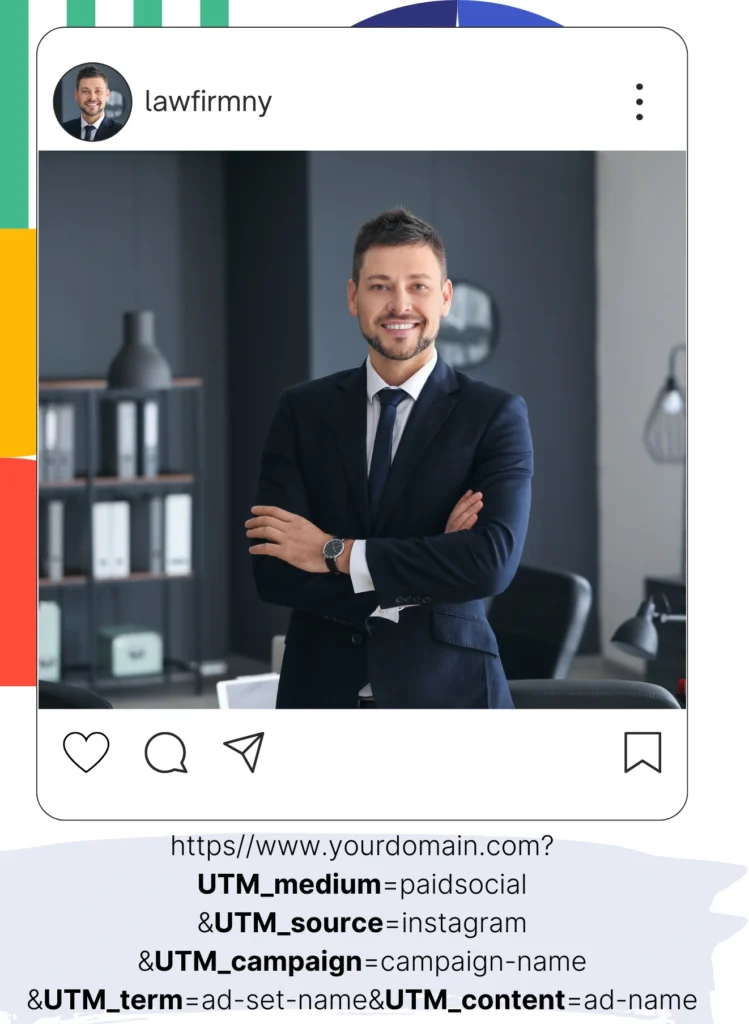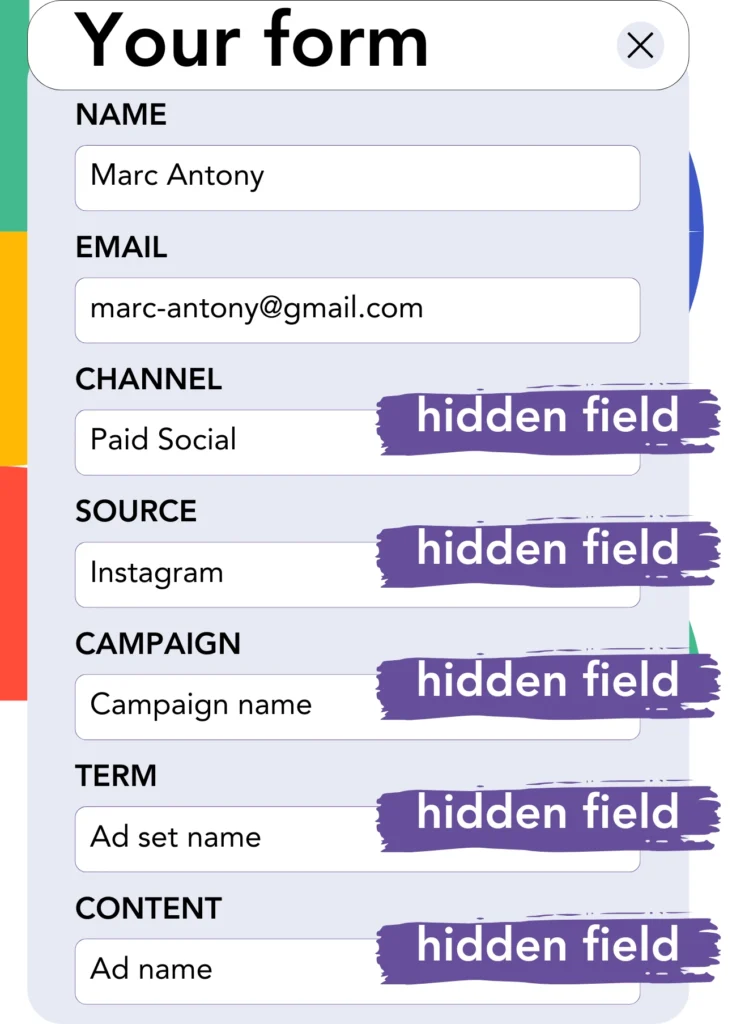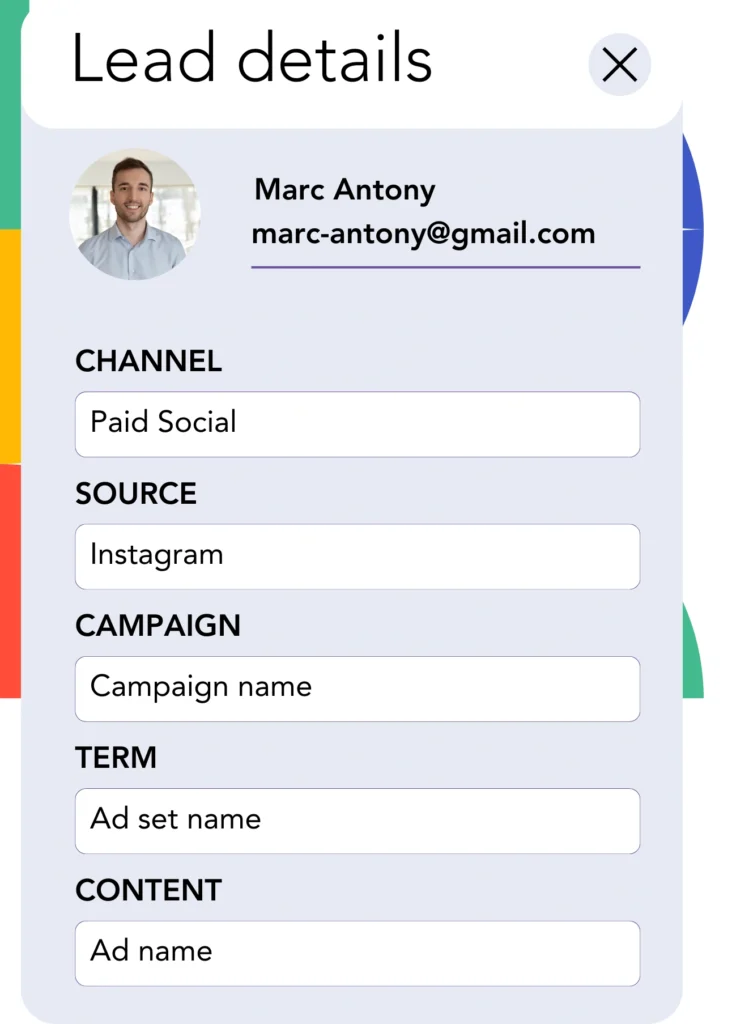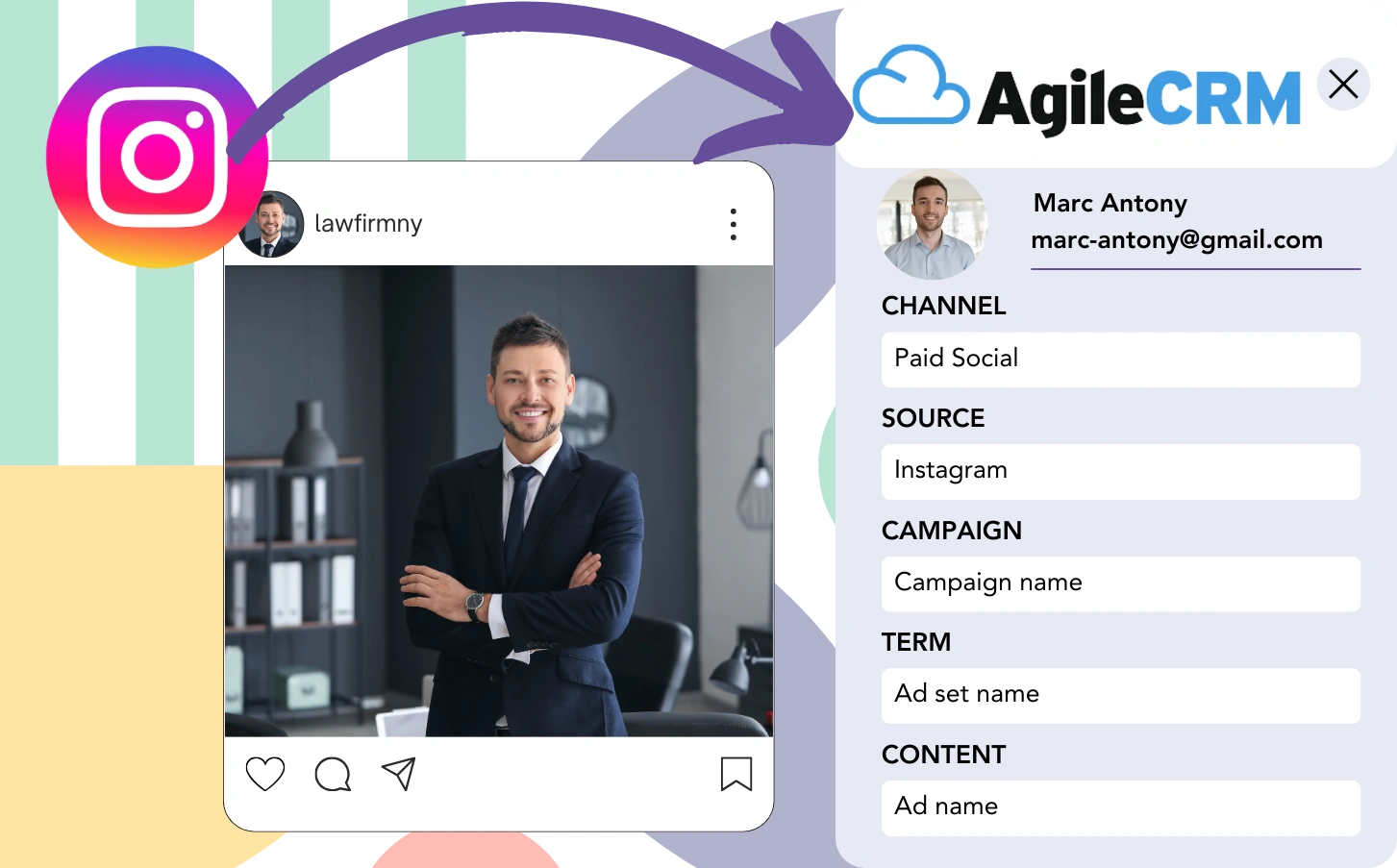Leads are collected on Instagram and sent to Agile CRM, but the original ad for each lead isn’t tracked. Similarly, when a lead becomes a customer, it’s impossible to trace back to the first Instagram ad.
The lack of tracking makes it challenging to determine the success of your Instagram ads, leaving you in the dark about which ads lead to conversions. This could cause you to spend on ads without understanding their return.
Fortunately, it’s now easy to link each lead to the exact Instagram campaign, ad set, and ad responsible for its generation.
Let’s review it together, step by step!
How to Track Instagram Ads in Agile CRM
Step 1: Add Leadsources in the head tag of your website

Step 2: Add the UTM parameters to your Instagram ads

In your ad URL, add UTM parameters to log Instagram data for campaign, ad set, and ad. Follow this format:
UTM_medium=paidsocialUTM_source=instagramUTM_campaign=campaign-nameUTM_term=ad-set-nameUTM_content=ad-name
The final URL should be structured as follows:
https://www.yourdomain.com/?UTM_medium=paidsocial&UTM_source=instagram&UTM_campaign=campaign-name&UTM_term=ad-set-name&UTM_content=ad-nameRemember: Leadsources gathers all lead source information, even if UTM parameters are not implemented, guaranteeing thorough tracking for each lead.
Step 3: Add the hidden fields in your form

These fields, known as hidden fields, are not visible to the user but can store data that is sent along with the form submission.
Leadsources places lead source details in the hidden fields of your form. Therefore, when a lead submits the form, these fields are filled with Instagram ad data automatically.
Leadsources collaborates with all leading form builders. For detailed steps on how to add hidden fields to your form, follow this guide.
Step 4: Capture the Instagram ads data in Agile CRM

When users tap your ads and reach your website, Leadsources retrieves data related to the Instagram campaign, ad set, and ad, along with other details.
Your form’s hidden fields are filled with Instagram ads data through Leadsources.
Therefore, once the form has been submitted, you can access the Instagram ad data and lead details in Agile CRM (This requires connecting your form to Agile CRM).
How does Leadsources work?
Leadsources retrieves Instagram ad data whenever a visitor lands on your website and automatically populates the hidden fields of your form. Once submitted, this data is forwarded to Agile CRM, along with the lead details you collected (like name and email).
Leadsources captures and stores all lead source data linked to every lead:
| Lead source data | Fetched automatically |
| Channel | ✅ |
| Source | ✅ |
| Campaign | ✅ OR use UTM_campaign |
| Content | UTM_content parameter is required |
| Term | UTM_term parameter is required |
| Landing page | ✅ |
| Landing page subfolder | ✅ |
The table above shows that in circumstances where UTM parameters are not applicable—such as organic sources like Google search or Instagram bio links—Leadsources continues to fetch certain lead source data:
- Channel
- Source
- Campaign
- Landing page
- Landing page subfolder
Unlike competing tools, Leadsources provides comprehensive tracking of lead sources across all marketing channels, organic and paid.
Performance reports: Lead, sales, and revenue by source
Tracking Instagram ad data in Agile CRM allows you to create detailed performance reports such as:
- Leads, sales, and revenue by channel
- Leads, sales, and revenue by source
- Leads, sales, and revenue by campaign (aka. Instagram campaign)
- Leads, sales, and revenue by term (aka. Instagram ad set)
- Leads, sales, and revenue by content (aka. Instagram ad)
This aids you in optimizing your Instagram budget according to the campaigns, ad sets, and ads that result in the highest leads, sales, and revenue.
Let’s highlight some of the reports you can develop:
1. Lead source reports
Create performance reports that provide the details on leads obtained through:
- Channel
- Source
- Campaign (aka. Instagram campaign)
- Term (aka. Instagram ad set)
- Content (aka. Instagram ad)
- Landing page
- Landing page subfolder
Example #1: Leads by channel
This report reveals which channel contributes the most to lead generation.

Example #2: Leads by Instagram campaign
You are now in a position to focus on a specific lead source (e.g., Instagram) and determine the leads produced by each Instagram campaign.

Example #3: Leads by Instagram ad
After identifying the Instagram campaign that drives the greatest number of leads, you can assess which specific ad group or ad generates those leads.

2. Sales and revenue source reports
Now that we understand which Instagram campaign, ad set, and ad yield our leads, we need to check whether these leads are resulting in sales and revenue.
To implement this, integrate your leads with a CRM like Agile CRM. This integration allows you to monitor sales and revenue resulting from multiple channels, sources, Instagram campaigns, ad sets, ads, landing pages, and landing page subfolders.
This information enables you to adjust your Instagram ad strategy to prioritize the channels, sources, campaigns, ad sets, and ads that have led to the greatest sales and revenue.
A variety of sales and revenue reports can be created, including:
- Sales and revenue by channel
- Sales and revenue by source
- Sales and revenue by campaign
- Sales and revenue by term (e.g., Instagram ad set)
- Sales and revenue by content (e.g., Instagram ad)
- Sales and revenue by landing page
- Sales and revenue by landing page subfolder
Example Scenario:
| Channel | Search Paid | Social Paid |
|---|---|---|
| Leads | 50 | 75 |
| Sales | 5 | 6 |
| Average Order Value | $150 | $100 |
| Revenue | $750 | $600 |
Following the release of ads on Google and Instagram, the initial “Leads by Channel” report pointed out that Social Paid ads (Instagram) resulted in more leads than Search Paid ads.
Nevertheless, a thorough analysis of sales and revenue data in Agile CRM revealed that the Search Paid channel yielded greater revenue with a fewer number of leads than the Social Paid channel. Consequently, you altered your budget to increase funding for the Search Paid channel.
LeadSources tracks the source of each lead in Agile CRM, whether they come from ads, organic search, social, email, etc. and syncs that data with each submission. See the full breakdown on the lead source in Agile CRM page.

